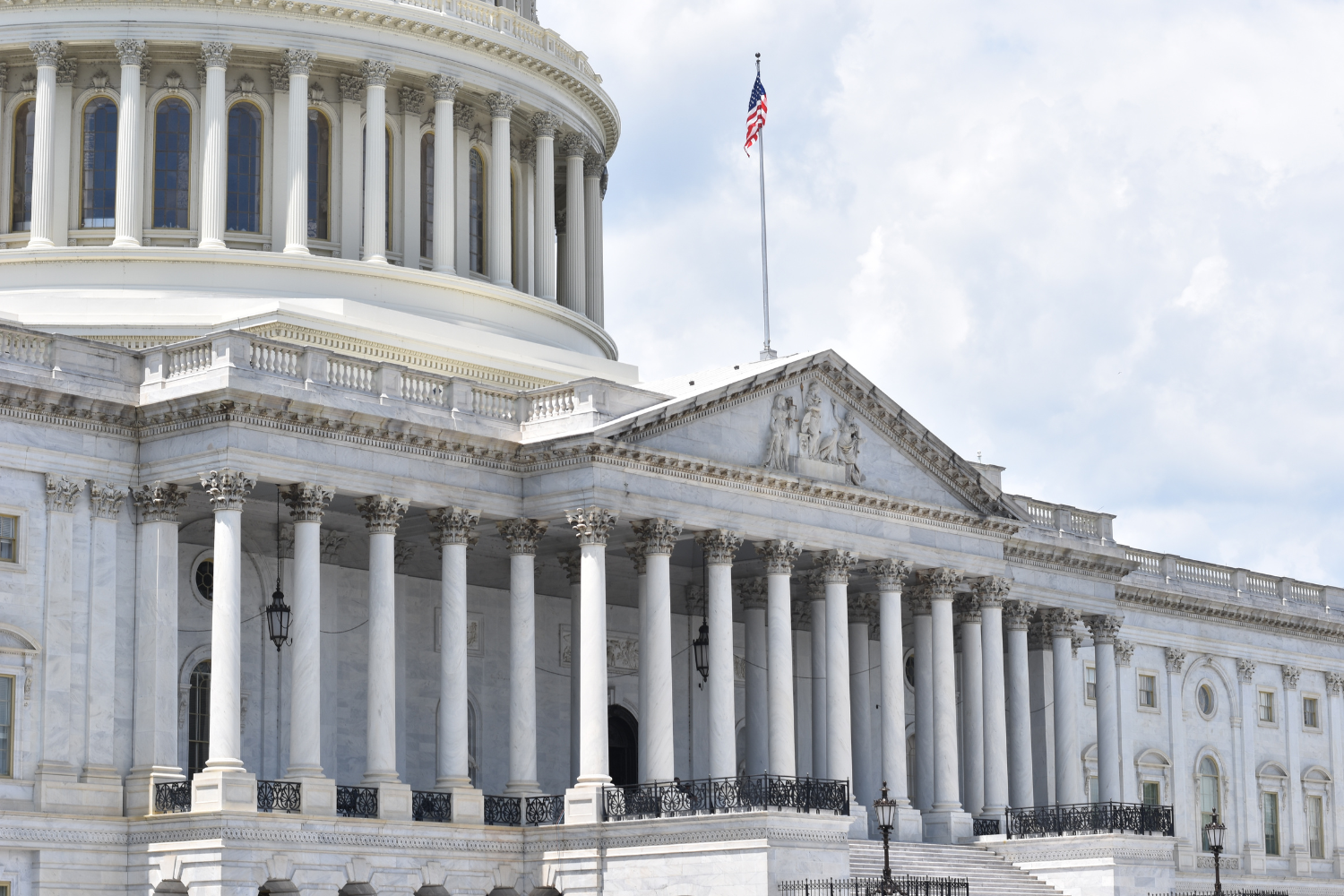This paper was submitted as part of Dr. Copel's application for ACOFP Fellowship, which recognizes exceptional national, state, and local service through teaching, authorship, research, or professional leadership. Visit the ACOFP Fellows page to learn more about fellowship and the nomination process.
CASE
A 74-year-old morbidly obese female, with acute respiratory failure secondary to COVID-19, has been intubated for twenty-eight days in the medical intensive care unit with multi-organ failure including acute renal failure requiring hemodialysis. She is being given artificial nutrition, broad-spectrum of antibiotics, anticoagulants, and has received all treatment options for COVID-19 available in the spring of 2020. She remains intubated with pulse oximetry in the eighties (ten points below normal) despite all efforts to improve her oxygenation. She contracted COVID-19 while working and she is a beloved member of her family. Despite the dismal odds of survival, her family has requested Full Code. They are optimistic that she will improve despite all clinical indicators pointing to the fact that she is dying. Multiple physicians have spoken to her family to advise them of her poor prognosis and impending death, but despite multiple conversations, the family refuses to place a DNR order.
In the spring of 2020, we were faced with clinical challenges that were unlike anything in the history of modern medicine. As the pandemic began in Wuhan, China and quickly spread to Italy before ultimately reaching the United States several months later, our way of practicing medicine quickly shifted to a disaster medicine approach. In New York State, executive orders were signed to allow physicians, nurses and EMS providers from all over the country to practice and assist without a state license. While we were quickly approaching maximum capacity, specialty ICUs, endoscopy suites, recovery rooms, orthopedic floors, conference rooms, lobbies were turned into COVID-19 units.[1] The New York City Emergency Medical Services started to receive more than 7,000 calls a day and the EMS crews went from one or two cardiac arrests in a week to sometimes twelve or more in one single shift. The case above became a daily reality. Everyday medical providers had to perform cardio-pulmonary resuscitations on ICU patients with the prospect of virtually no medical benefits. While doing so, not only did they deploy increasingly scarce resources that could be allocated for other purposes, but they also put themselves and their teams at a higher risk of illness for severe acute respiratory syndrome coronavirus due to the transmissibility through droplets and aerosols.
This paper addresses one question that physicians and medical teams continuously discussed when hospitals reached maximum capacity: Would it be ethical to enact a “unilateral DNR” or perform a “partial code” on patients despite their or their family’s wishes?
In attempting to answer this question, we trace back to the history of DNR orders. We show how DNR orders came historically as a pushback against medical paternalism. As such, it became the symbol of patient’s autonomy. The Family Health Care Decision Act is, among other legislations, the result of this long battle and is an important victory in further acknowledgment of patient and surrogate decision-maker rights. While this paper does not address DNR orders in conventional standard of care, it does draw lessons learned by the COVID-19 crisis to suggest that compassionate DNR orders should be allowed with strict criteria in crisis standard of care. This paper suggests a couple of recommendations for further policy developments.
HOW THE HISTORY OF DNR ORDERS IMPACTED THE COVID-19 RESPONSE
Cardio-pulmonary resuscitation (CPR) as a treatment by default is an anomaly in hospital settings: “It is the only order that requires patient consent to prevent a medical procedure from being performed.”[2] Patient autonomy is usually conceived as a negative right, i.e., the right for a competent patient to refuse any medical intervention, even life-saving or life-sustaining treatments, and not as an entitlement right, i.e., the right to request any medical intervention, even when medically not indicated or harmful. The history of DNR orders is well known.[3] After the first success of CPR and the first CPR guidelines published in 1966, CPR or “code blue” raised concerns that medical teams would initiate a code even when the sole medical benefit was prolonging the patient’s agony. Among institutions, partial codes, slow codes, Hollywood codes, or performing less than a full resuscitation attempt became routinely practiced. Partial codes were often concealed with purple dots or cryptic initials on patient’s charts or sometimes only verbally communicated from shift to shift.[4] This culture of secrecy combined with an absence of an established mechanism for decision-making about resuscitation triggered tremendous outcry from patient advocates and the bioethical community. The increasing emphasis on patient autonomy in the 1970s, and, in particular, the prioritization of the patient’s wishes and values over the professional’s, made the medical community reconsider the argument of medical futility for placing DNR orders. For good reasons, many bioethicists raised concerns particularly with respect to the possible confusion between physiological futility and value-based futility. Partial codes were consequently denounced, for good reasons, as a blatant example of medical paternalism and even an abuse of clinician’s prerogatives. Shortly after, CPR became the treatment by default and DNR orders became a tool for a shared decision-making between the clinical team, the patient and the family. New York State was the first state to pass a landmark statute governing DNR orders in 1988. Henceforth, all patients were presumed to have consented to CPR. NYS’s lead was followed by many other states. Until now, the Family Health Care Decision Act (FHCDA) reflects this legacy: for adult patient with decision-making capacity, DNR orders must be consented and signed by the patient himself; for adult patients without decision-making capacity but who have a surrogate, DNR must be agreed to by the surrogate. Yet, the FHCDA also requires an administrative consent that entails a medical assessment by the primary care provider as well as the medical director designee.
As a matter of fact, mediation, most of the time, is enough to help families understand that palliative care is not abandonment, and they ultimately become comfortable with the idea that doing everything does not mean performing medical interventions that are ultimately harmful for the patient. When bioethics mediation is unsuccessful at mitigating the surrogate’s request for performing CPR, it is in fact rare that medical teams will go against the family wishes. Moreover, As the patient’s beloved ones are the ones who will have to live with the medical decisions made during the time of an hospital admission, some scholars have even argued in favor of compassionate CPR in instances when it may not be medically beneficial. In an essay “Is it always wrong to perform futile CPR?”, Robert Truog argues for instance that in exceptional cases, physicians may want to provide CPR as “at the end of life …the interests of the patient begin to wane, while those of the family intensify.”[5] In a very moving story, he shares the words of a father who looks at the bruises on the chest of a young boy as a heroic battle showing that medicine had tried to do “everything to save his son.”[6] Many scholars have pushed back against this provocative stance but here, interestingly enough, Truog’s extreme argument for performing “compassionate CPR” at families’ requests – in case where mediation and goals-of-care conversations have been unsuccessful at placing a DNR order on patient chart - relies on the fact that such a request remains exceptional.
However, when COVID-19 did hit the United States, CPR requests that were extremely unlikely to benefit patients ceased to be exceptional ceased to be exceptional: they became ordinary. This deeply transformed the ethical calculus: The new routine of performing a couple of times a day multiple chest compressions – and breaking ribs – daily has had a tremendous psychological toll on medical teams. The great increase of moral distress has made the bioethical community wonder: Is what Robert Truog calls compassionate CPR actually compassionate? Specifically for medical providers in the time of a pandemic. In many cases, not only physicians felt powerless – their role, at least in the first moments of the pandemic, have been often limited to witness the inevitable – but they had to perform repeatedly harmful procedures many times a day without the prospect of any medical benefits. Consequently, in the next section, we argue that we shall ensure that such a situation will not occur again and consequently allow for compassionate DNR in crisis standard of care.
ARGUMENTS FOR COMPASSIONATE DNR IN CRISIS STANDARD OF CARE
Compassionate v. Unilateral DNR?
As always, giving realistic expectations to patients and families is absolutely essential both in conventional and crisis standard of care. Goals of care needs to be addressed as early as possible and be reassessed at each stage of patient’s hospital admission. We owe to our patients and families honesty and transparency. Without providing families with honest and transparent opinions based on medical facts, families are often unable to make appropriate decisions for their beloved ones. We do our patients and their families an incredible disservice by offering options that are not realistic. In medicine we must recognize that sometimes we cannot cure our patients: we are limited by available treatment options. We must confront this openly with families and help them to understand that some treatment cannot and will not be offered.
In an influential paper, If We Think It’s Futile, Can’t We Just Say No? Susan Rubin points out that “for someone to have a right to something, someone else must have a correlative obligation to provide it.”[7] In other words, we argue that what we call a compassionate DNR is not so to speak a “unilateral” DNR for a simple reason: “describing an order as unilateral implies that there are always two sides in decision making about DNR status (…) however, there are times when CPR is not a reasonable treatment and it is not appropriate to regard the patient or surrogate as another side in decision making.”[8] If a patient does not get better - even with intensive care -, we must tell families and surrogate decision-makers that we do not recommend CPR.[9] As we know, navigating with families requires us to be very strong and clear about the options that medicine realistically permits.
Now obviously the question is: what do we do when despite those conversations the family still wants resuscitation[10] “no matter what” during a pandemic? To this question, the American Medical Association’s Code of Ethics answers: “If a patient (either directly or through an advance directive) or the patient’s surrogate requests resuscitation that the physician determine would not be medically effective, the physician should seek to resolve the conflict through a fair decision-making process, when times permits.”[11] We may argue that we shall initiate the code but then decide in the moment of the cardiac arrest how much effort we should spend at resuscitating. In other words, providing CPR and respecting families’ wishes does not necessarily mean spending forty minutes at trying to resuscitate the patient: the code can be shorter when it is deemed to have no medical benefits. Or we may want to push only drugs like epinephrine but not doing compressions. But we also need a legal system that supports such moral statements and consequently provides mechanisms that protect medical providers. We argue that in crisis standard of care, compassionate DNR should be an option of last resort in cases where mediation has been unsuccessful and families are adamant at requesting non-beneficial CPR for their loved ones.
(i) As a matter of fact, during the pandemic we often failed to honor our patients as an end in themselves: many physicians felt that they could not refuse to perform futile CPR and had to honor families’ requests. But by doing so, we treated our patients as a means to an end, a means to satisfy families’ needs. And let’s clarify: because families could not be at the bedside, families were sharing intense feelings of powerlessness and guilt, which in turn made our conversations about placing DNR even more difficult than in conventional care. Because they were not on the floor to defend their parent’s best interests, many families saw DNR orders as abandonment. It was cruel to offer to families CPR as a medical option. It was cruel to force medical providers to perform CPR for no medical benefits.
(ii) In a pandemic, especially of the magnitude and severity of COVID-19 in New York City and the surrounding areas, we were extremely close to exhausting our resources in March and April of 2020. In disaster medicine, we are taught that our responsibilities shift from the individual care to community care with the goal of saving the greatest number of lives. Perhaps during a pandemic, we should de-emphasize patient autonomy and refocus on the expertise of medical professionals and scientific research. According to data published in JAMA by Thapa et al.[12] survival to discharge in in-hospital cardiac arrest (IHCA) is 25%. In COVID-19, survival to hospital discharge is merely 3%. Of the patients who suffered IHCA in their study, patients with mechanical ventilation, renal replacement therapy and vasopressor support, all had correlation to poor outcomes. Given this data and documented risk of transmitting COVID-19 viruses to medical professionals during resuscitation efforts, we argue that it is reasonable to have legal mechanisms to assign a compassionate DNR to patients when CPR is most likely to have no medical benefits and mediation has been unsuccessful.
RECOMMENDATIONS
In 2015, New York State put together an extremely detailed policy on allocation of resources: the NYS Task Force for allocating ventilators.[13] The guidance specifies that there should be a triage team as well as involvement of the hospital ethics committees. It also specifies the criteria that must be met for ventilators to be considered a scarce resource. But as we know, NYS never declared crisis standard of care and hospital leadership failed to enact such policies: physicians were left to make decisions without any guidance. Having a triage protocol is essential in order to avoid biased decision making and helps to ensure the process is as objective as possible. Reports from Memorial Hospital after Hurricane Katrina showed that not having policy or guidelines placed a tremendous burden on the physicians and medical staff. However, we failed to learn from this error and created a similar situation in the COVID-19 pandemic by not putting these guidelines into action.
Interestingly, the 2015 guideline focuses solely on the use of ventilators and completely avoids the question of CPR. The presumption that everyone would want to be resuscitated needs to be re-examined during future pandemics. Compassionate DNR should be an option of last resort in cases where mediation have been unsuccessful and families are adamant at requesting non-beneficial CPR for their loved ones.
To ensure transparency and objectivity, cases should be reviewed by a triage committee made up of physicians who are not involved in the patient’s care as well as the hospital ethics committee.
Age should not be used as a deciding factor as we want to avoid discriminating against the elderly. The decision should only be based on health outcomes and medical comorbidities using for instance the Sequential Organ Failure Assessment (SOFA) score.
Communications with families must be emphasized. Information about poor prognosis must be communicated clearly to help family in their process of grieving. It is important to enlist the palliative care team at the institution to help speak with families and make them understand that although CPR will not be offered, the patient will receive the best possible care by focusing on comfort care. Palliative care teams can help in particular navigating with psychosocial aspects of death and dying for patient’s families. Preparing for future pandemics means that teams should receive communications training to talk about those issues as compassionate DNR in crisis standard of care should always be seen as a last resort.
CONCLUSION
The goal of this paper is not to revive the discussion around unilateral DNR in conventional standard of care.[14],[15] The scope of our argument is quite narrow and only focuses on crisis standard of care. We need to develop legal mechanisms that allow medical providers to place DNR orders when mediation has been unsuccessful and protect them of liability in crisis standard of care when CPR is deemed to be non-beneficial.
REFERENCES
[1] Powell, Tia, and Elizabeth Chuang. “COVID in NYC: What We Could Do Better.” American Journal of Bioethics 20, no. 7 (July 2, 2020): 62–66. https://doi.org/10.1080/15265161.2020.1764146.
[2] Loertscher, Laura, Darcy A. Reed, Michael P. Bannon, and Paul S. Mueller. “Cardiopulmonary Resuscitation and Do-Not-Resuscitate Orders: A Guide for Clinicians.” The American Journal of Medicine 123, no. 1 (January 2010): 4–9. https://doi.org/10.1016/j.amjmed.2009.05.029.
[3] Kucmin, Tomasz, Małgorzata Płowaś-Goral, and Adam Nogalski. “[A brief history of resuscitation - the influence of previous experience on modern techniques and methods].” Polski Merkuriusz Lekarski: Organ Polskiego Towarzystwa Lekarskiego 38, no. 224 (February 2015): 123–26.
[4] “The DNR Order after 40 Years | NEJM.” Accessed July 12, 2021. https://www.nejm.org/doi/full/10.1056/NEJMp1605597.
[5] Truog, Robert D. “Is It Always Wrong to Perform Futile CPR?” The New England Journal of Medicine 362, no. 6 (February 11, 2010): 477–79. https://doi.org/10.1056/NEJMp0908464.
[6] Ibid.
[7] Rubin, Susan B. “If We Think It’s Futile, Can’t We Just Say No?” HEC Forum: An Interdisciplinary Journal on Hospitals’ Ethical and Legal Issues 19, no. 1 (March 2007): 45–65. https://doi.org/10.1007/s10730-007-9031-8.
[8] Courtwright, Andrew M., Sharon Brackett, Wendy Cadge, Eric L. Krakauer, and Ellen M. Robinson. “Experience with a Hospital Policy on Not Offering Cardiopulmonary Resuscitation When Believed More Harmful than Beneficial.” Journal of Critical Care 30, no. 1 (February 2015): 173–77. https://doi.org/10.1016/j.jcrc.2014.10.003.
[9] Vitals Talks offers very useful resources about the way to navigate those recommendations: we could say “I cannot recommend CPR for your beloved one”, “CPR won’t be effective and therefore we do not recommend it”.
[10] “After the DNR: Surrogates Who Persist in Requesting Cardiopulmonary Resuscitation - Robinson - 2017 - Hastings Center Report - Wiley Online Library.” Accessed July 12, 2021. https://onlinelibrary.wiley.com/doi/abs/10.1002/hast.664.
[11] American Medical Association, “Opinion 2.22-DNR”.
[12] Thapa SB, Kakar TS, Mayer C, Khanal D. Clinical Outcomes of In-Hospital Cardiac Arrest in COVID-19. JAMA Intern Med. 2021;181(2):279–281. doi: 10.1001/jamainternmed.2020.4796
[13] New York State Task Force on Life & Law and NYS Department of Health. 2015. Ventilator Allocation Guidelines. Allocation of Ventilators. New York State Department of Health. https://www.health.ny.gov/regulations/task_force/reports_publications/docs/ventilator_guidelines.pdf.
[14] Bishop, Jeffrey P., Kyle B. Brothers, Joshua E. Perry, and Ayesha Ahmad. “Reviving the Conversation around CPR/DNR.” The American Journal of Bioethics: AJOB 10, no. 1 (January 2010): 61–67. https://doi.org/10.1080/15265160903469328.
[15] Blinderman, Craig D., Eric L. Krakauer, and Mildred Z. Solomon. “Time to Revise the Approach to Determining Cardiopulmonary Resuscitation Status.” JAMA 307, no. 9 (March 7, 2012): 917–18. https://doi.org/10.1001/jama.2012.236.






